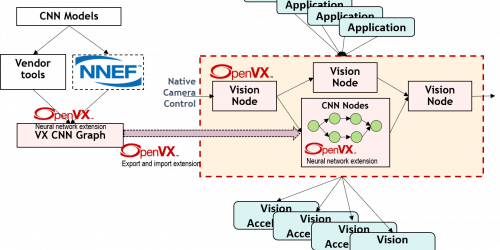NXP Semiconductors Demonstration of Optimized Performance and Memory Utilization for Object Detection on i.MX RT
Markus Levy, Director of Enabling Technologies at NXP Semiconductors, delivers a product demonstration at the May 2018 Embedded Vision Summit. Specifically, Levy demonstrates the i.MX RT architecture, which represents the convergence of low-power application processors and high-performance microcontrollers. This particular demo shows the i.MX RT1050 MCU, which is based on a 600MHz Arm® Cortex®-M7 core […]


